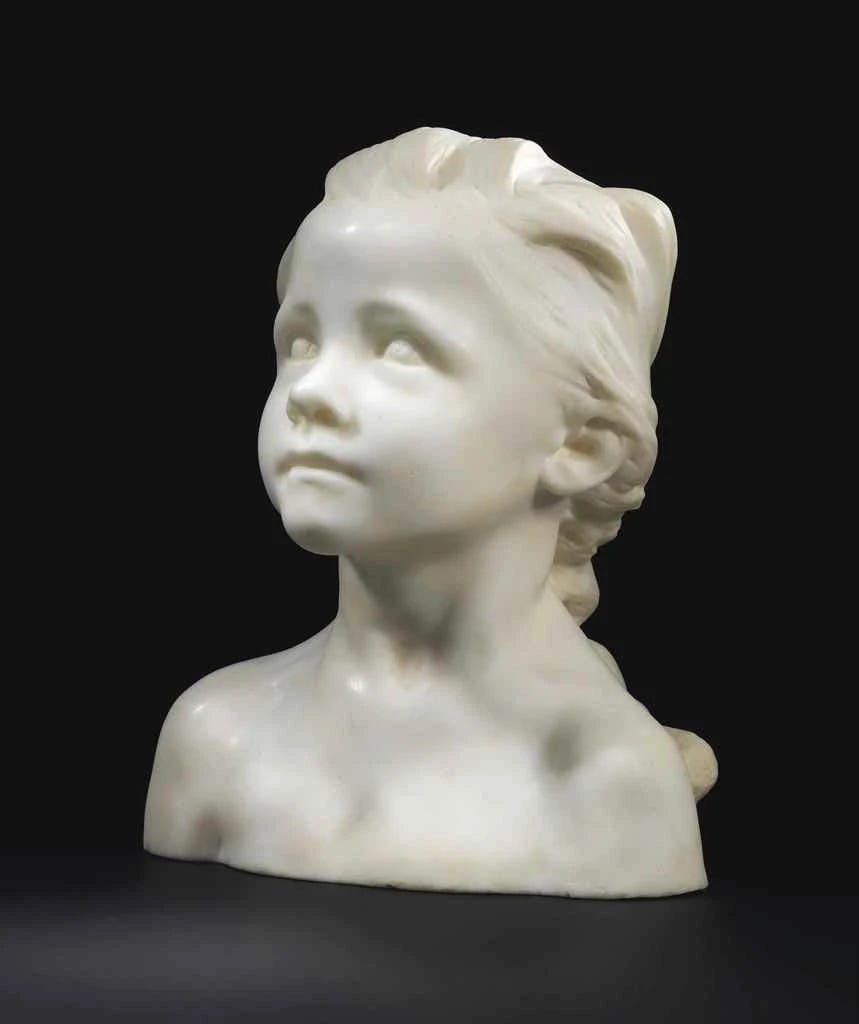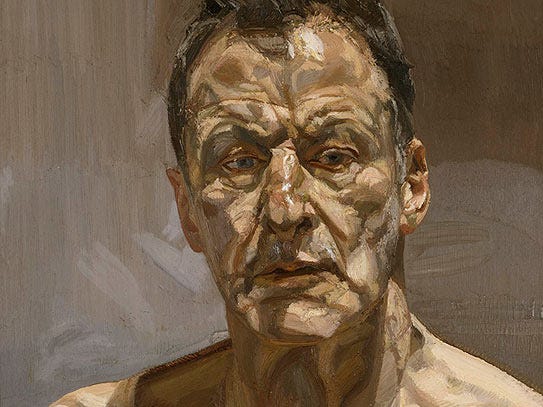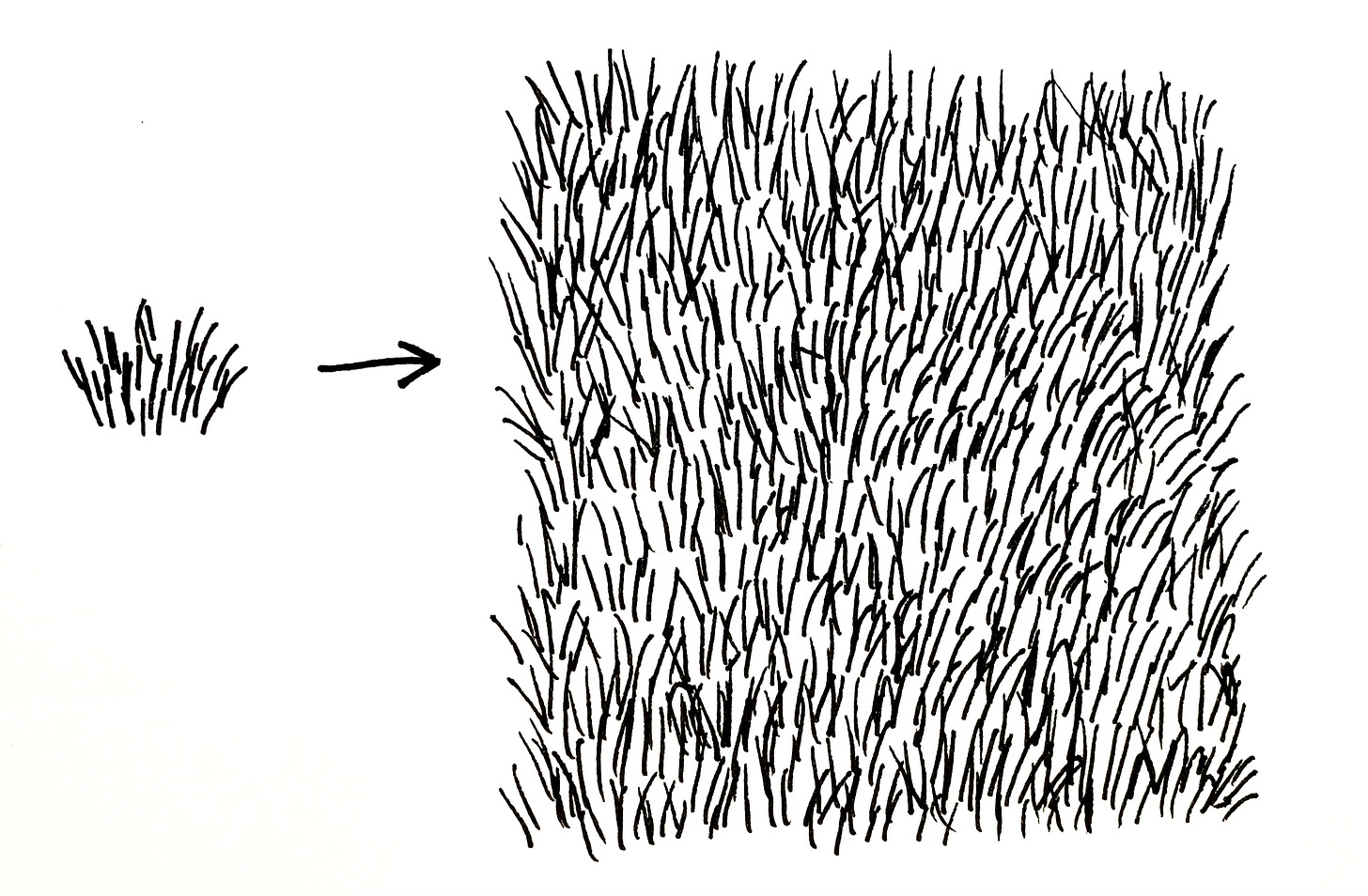Helloooooo GUT Peeps.
Happy Pride Month! It’s a special month for my LGBTQIA fam. Remember, Pride started as a riot for equal rights and protection. This year, let’s focus on securing safety & freedom for our Trans friends & family (esp Black & Brown Trans folks) who are under attack all over the USA and world. Love wins. But only if we fight for it.
❤️🏳️🌈🏳️⚧️❤️
Last week’s Free Draw assignment was a hit. We’ll definitely do more of that soon. I selected a few of your drawings and put them at the end of the dispatch, but be sure to check out ALL the drawings in the GUT Art Share. It is SUCH a joy to see everyone sharing tips and learning from each other over there. (If you are having trouble accessing the cha/Art Share or have any questions about this, leave them in the comments and I or another GUT member will help you.)
Now onto the Drawing.
I’ll be honest: the past month - year in fact - has been wild. Some fun ups, for sure. But also my lowest lows. And while I wish my emotional roller coaster would cruise for a bit, I have to accept I am a human. That means Big Feelings. And as crappy as it might feel right now, the feelings - AKA textures - make life interesting, rich and full. It makes me/us human. We can’t have the love without the loss, the soft without the sharp, the warm without the heart-shredding-sandpaper-rough, right? I’m doing my best to embrace ALL the textures that come up. To feel them. Name them. Maybe even draw them. So with that, friends:
Let’s Draw Some Texture
This week, let’s put some of those textures down on paper. If you want to turn this into a feelings exercise and label your textures with emotions, go for it. If you stick to the art-centric lesson, that’s great, too. Either way, we’re going to explore texture and value (light and shadow) and learn how to make our drawings (and maybe life) as varied and interesting as possible.
What is texture in art?
So there are two types of textures in art:
ACTUAL texture. That’s the texture you’d feel if you touched the art.
What texture would Camille Claudel’s marble sculpture be? Probably smooth and hard. What if it was made of sparkly slime? Or Sandstone? Or moss? Every drawing, painting, sculpture, and installation has one or more actual textures, even if the art is not meant to be touched by a viewer.
IMPLIED texture. That’s how an artist uses materials to create the appearance of texture.
This Andrew Wyeth painting is made with egg tempera paint, which is a fast drying, slick paint. It’s on panel, which is a flat, hard surface. So while the actual texture of this painting is probably shiny and hard, the IMPLIED texture is very different. The Implied texture is… Grassy. Dry. Sharp. Rough… How many different textures can you count in this paintings? What words would you use to describe them? Look closely. How do you think Wyeth created each of these textures?
But wait! There’s more. You get a BONUS TEXTURE!!
Bonus Texture: IMPASTO. When an artist uses tools like a palette knife, brushes or even their fingers to build up paint on a canvas in such a way that the paint itself becomes actual texture. This is called IMPASTO. You’ve seen this in paintings by Van Gogh, Money, and one of my all time favorite portrait aritsts, Lucian Freud.
Today, we are focusing on IMPLIED texture.
Drawing Implied Texture
How you create (or imply) texture will vary depending on which medium you use. To start with, I suggest we work exclusively with pen and paper. By restricting ourselves to black marks on a white surface we have to learn the basics and really push our imagination. Creating implied texture with pen on paper also quickly becomes a total doodle-making zone, which is awesome and super fun and less stressful. I think we could all use that right now.
How do you create an implied texture with just a pen??
Creating a texture with just a pen is very similar to creating a pattern: draw marks that implies the texture you’re going for, then you simply repeat it all over the object/space. Ta-da. Texture.
With that, go grab your paper and pen.
We’re doing TWO Drawing Exercise/Assignments this week. Both are simple and fun. One of them taps that knowledge we built with the GUT lesson on Values and Shading. (If you haven't done that lesson yet, you might want to check it out. Or don’t! No rules in art. It’s always here if you want to try later.) Both of these texture prompts are easy, fun, and get our feelings moving through our bodies.
NOW BRING ON THE GOOD FEELS.
Assignment
Keep reading with a 7-day free trial
Subscribe to DrawTogether with WendyMac to keep reading this post and get 7 days of free access to the full post archives.






